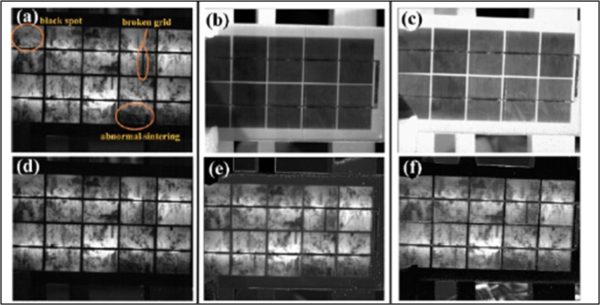Scientists at the Nanjing University of Science and Technology, in China, have developed a PV panel defect detection system that is claimed to work under any lighting conditions and in all weather.
Described in the paper Defect detection system for silicon solar panels under all-day irradiation, which was recently published in Applied Optics, the novel technique consists of combining software that applies a modulated electric current to the PV panels and an indium-gallium-arsenide (InGaAs) photodiode detector that takes a sequence of images of the panels.
“Today’s defect detection systems can only be used to find defects at night or on solar panel modules that have been removed and moved inside or into a shaded environment,” researcher Yunsheng Qian stated.
Furthermore, the system includes a filter that is able to limit the detected wavelengths detected to around 1,150nm and to remove some of the stray sunlight from the images. “Using these image data as data sources, a defect display algorithm model is designed,” the researchers explained.
Popular content

Image: Yunsheng Qian, Nanjing University of Science and Technology
“The very fast imaging speed allows more images to be collected so that a greater number of changes between images can be distinguished,” said Sheng Wu, the paper's main author. “The key development was a new algorithm that distinguishes the modulated and unmodulated parts of the image sequence and then magnifies this difference.”
The technique was tested on several mono and polycrystalline panels and the Chinese group claims it was able to detect faults on modules with irradiances from 0 to 1,300 W/m2, which it said equates to light conditions ranging from complete darkness to full sunlight. “The results show that this algorithm can reduce background interference in an effective way and improve the contrast of defects displayed under high irradiance.”
Looking forward, the research team is planning to develop software to reduce digital noise and improve image quality, so that the detector can collect image changes more accurately. The academics also want to see if artificial intelligence could be applied to the acquired images to automatically identify the types of defects, and further streamline the inspection process.
This content is protected by copyright and may not be reused. If you want to cooperate with us and would like to reuse some of our content, please contact: editors@pv-magazine.com.



By submitting this form you agree to pv magazine using your data for the purposes of publishing your comment.
Your personal data will only be disclosed or otherwise transmitted to third parties for the purposes of spam filtering or if this is necessary for technical maintenance of the website. Any other transfer to third parties will not take place unless this is justified on the basis of applicable data protection regulations or if pv magazine is legally obliged to do so.
You may revoke this consent at any time with effect for the future, in which case your personal data will be deleted immediately. Otherwise, your data will be deleted if pv magazine has processed your request or the purpose of data storage is fulfilled.
Further information on data privacy can be found in our Data Protection Policy.